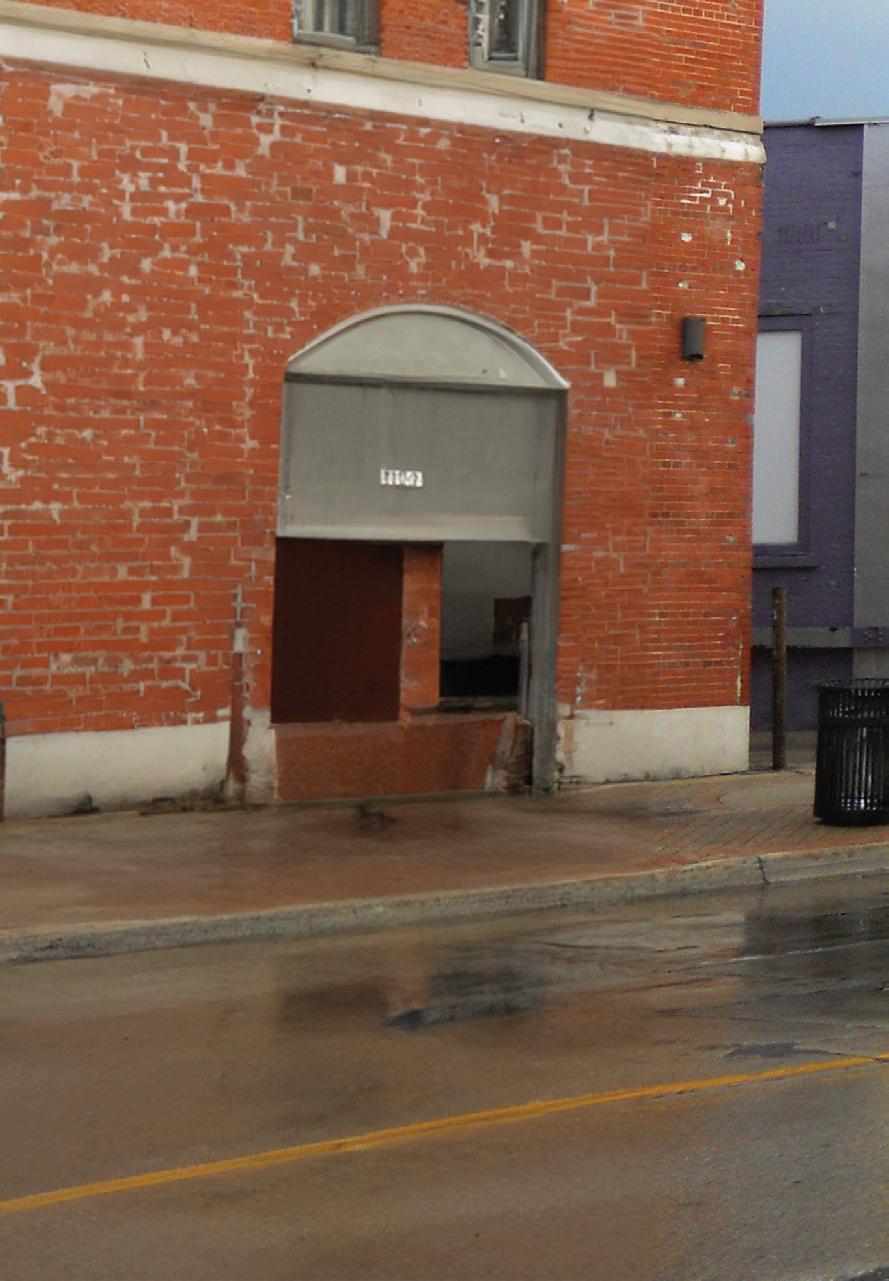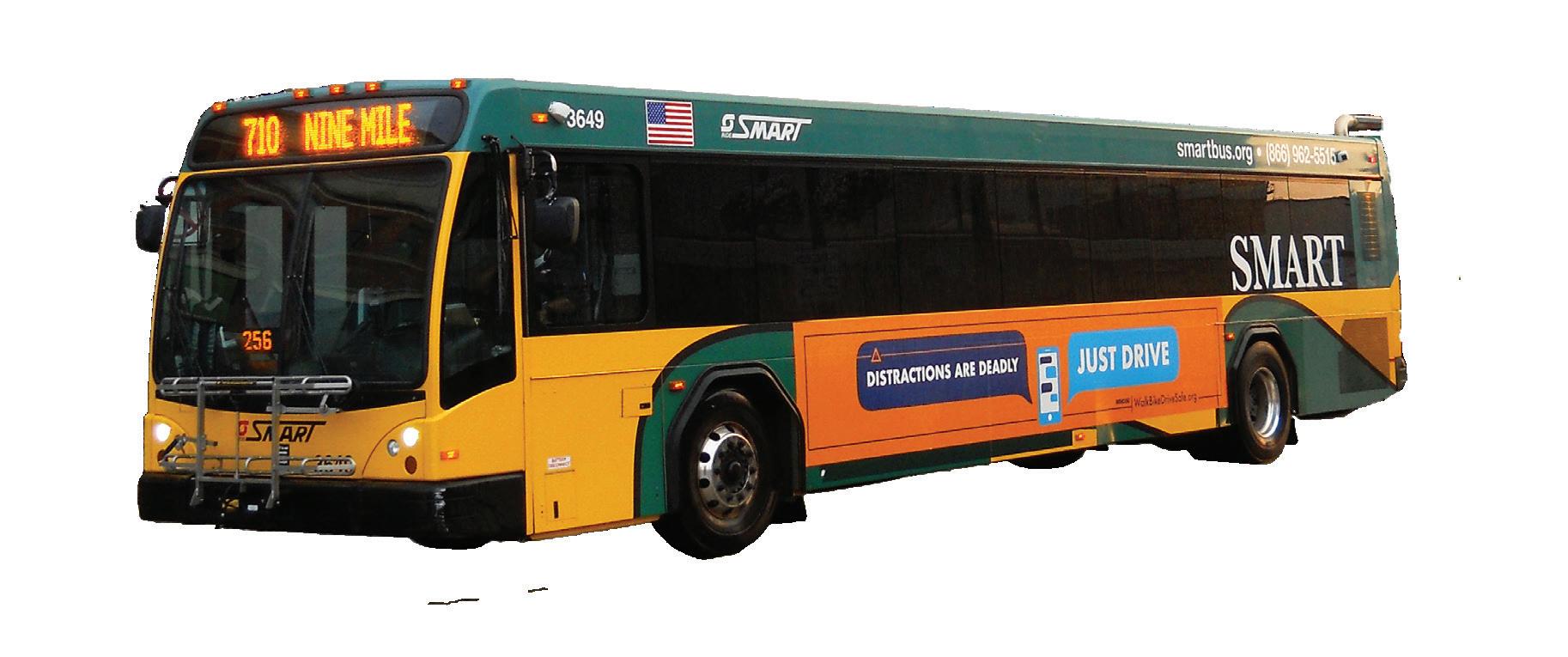PROGRESS REPORT 2024
Creating a TransportationSeamlessNetwork for Oakland County


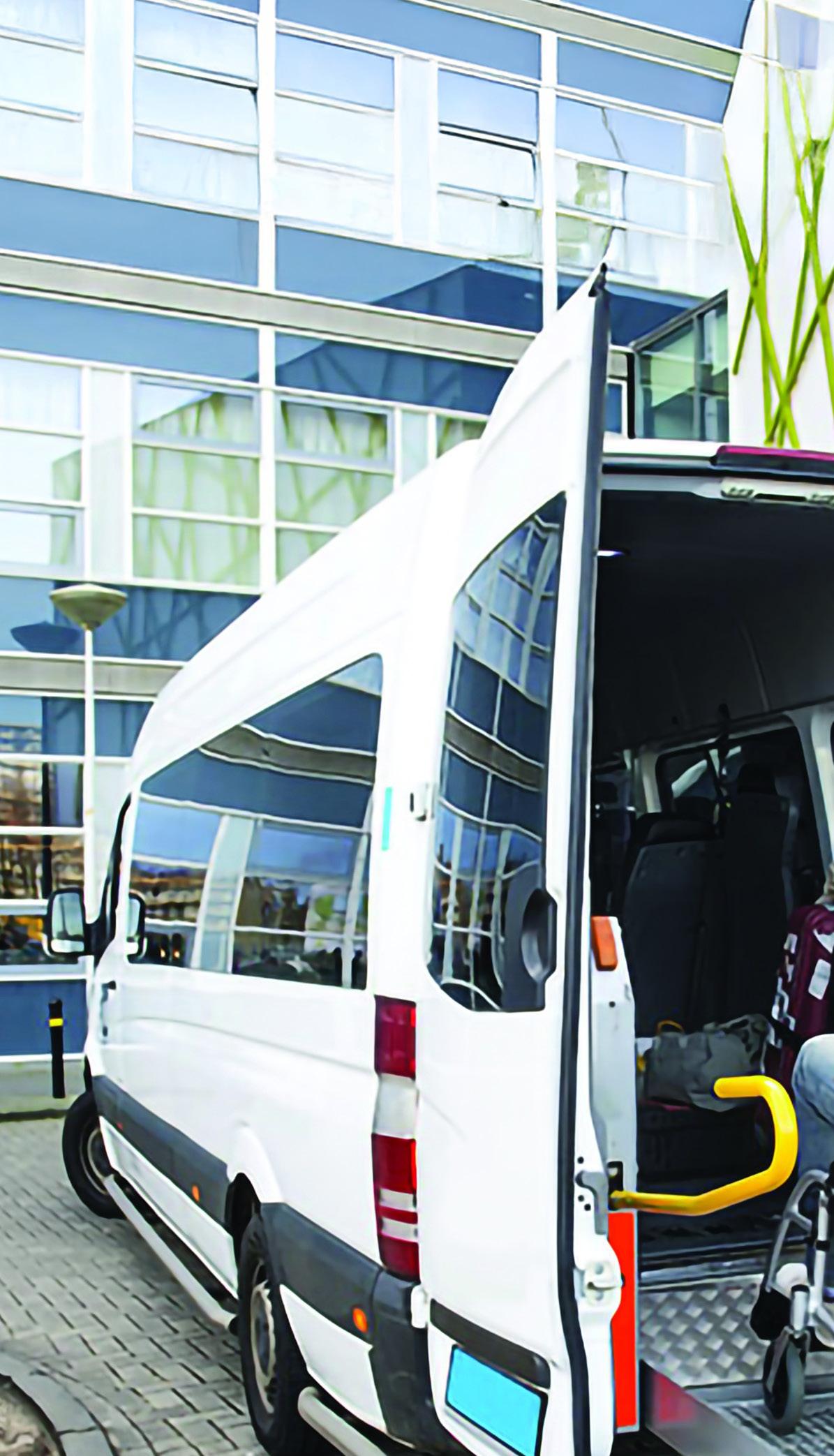


















Expanding access to public transportation has always been one of my top priorities and the progress we’ve made since voters approved a county-wide public transit millage in 2022 is truly remarkable. With that millage, we’ve expanded hours of operation, hired hundreds of new drivers and created an on-demand service in every part of our county. This expansion provides all of our residents – including our seniors and veterans — the freedom of an affordable ride to medical appointments, shopping and recreation services.
Our fixed-route service has expanded to key job centers in Novi and Rochester Hills, moving workers to jobs and college students to campuses. And this is delivering a boost to our local economy, connecting employees with businesses that have been dealing with staff shortages for years. The proof of the success of our robust public transportation system is clear. Ridership has seen unprecedented growth with our local transit providers doubling, and in some places even tripling their ridership.
Public transportation in Oakland County has been transformed by the support of our residents and deep collaborations among transit providers, local governments and businesses. But it is the human stories from the people who have benefited from this newfound freedom that are most gratifying. Consider Frank Withers, a retired Army Sergeant, whose use of the Veterans Ride Free program has allowed him to have weekly visits with friends at the Waterford Senior Center. Or Holly resident Theresa Rodgerson, who felt confined to her senior apartment until public transit provided a gateway to greater independence.
Access to jobs and education, greater freedom of movement and for many, a new lease on life. That’s what public transportation is all about and this annual report is a great way to learn all about the progress we’ve made in just three short years.
With sincere appreciation,

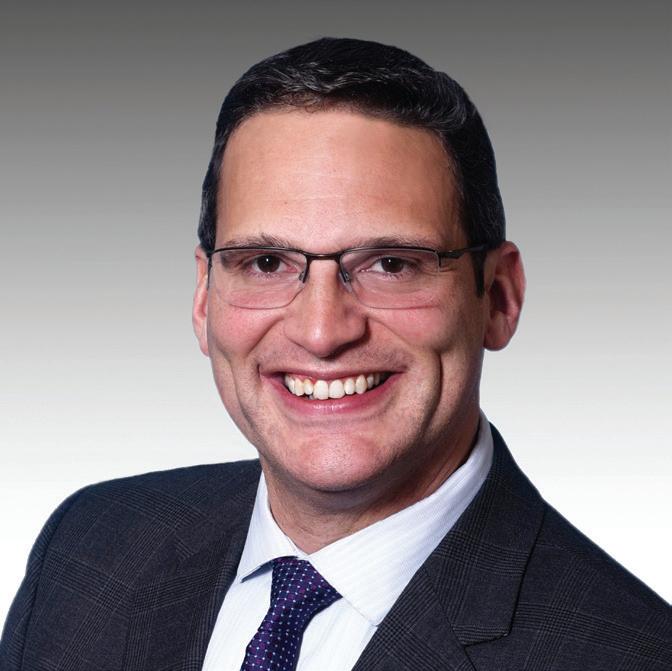
A thriving community requires allowing people to independently move to the places they want to go, whether for work, health care, education or personal leisure. This vision is achieved with better public transit, and Oakland Transit is achieving it by connecting people across all communities. New transit routes, new stops, and new service are helping people get to new destinations. More rides completed than ever before show us the need exists. Together, we are making incredible progress. This is only possible because every community across Oakland County has access to a base level of public transit – for the first time in history!
Oakland Transit is evaluating unique community needs, prioritizing vulnerable populations and removing mobility gaps. This continued momentum is connecting thousands of residents and helping them get to their desired destinations. People want better transit. More people are using transit. And they are getting to more destinations at more times of the day than ever before.
I want to thank the voters of Oakland County that made this possible, the entire Oakland Transit team, all transit providers, and the people that make the buses run. Altogether, people’s lives are better, and our county is stronger.
The future is exciting, and we will continue to be tireless advocates for what better public transit within Oakland County can be.
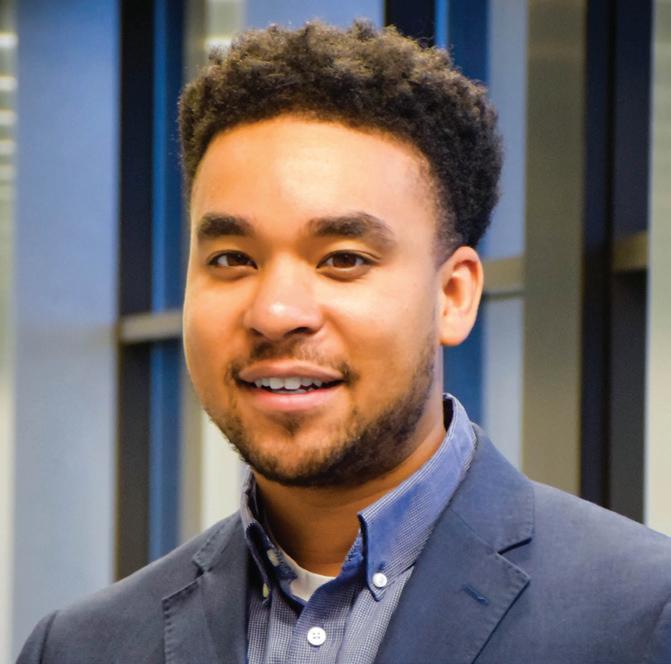
As Oakland County continues to grow and evolve so does our commitment to creating a more connected and accessible region for all. The 2024 Oakland Transit Annual Report, Building Momentum: Expanding Transit Access in Oakland County, reflects the progress we’ve made in enhancing public transportation and the opportunities ahead to further improve mobility for our residents, businesses, and communities.
This report serves several key purposes:
• Demonstrating Progress & Impact
• Educating & Informing
• Highlighting the Value of Transit
• Ensuring Transparency & Accountability
• Engaging Stakeholders & Building Support
Public transportation is a critical component of economic development, workforce accessibility, and quality of life. Together, we are building a more connected Oakland County—one that ensures every resident has the mobility options they need to thrive. And this progress is all made possible by the taxpayers of Oakland County.
Thank you for your ongoing support as we continue to expand and improve transit services across our county.
The Oakland County Transit Ad Hoc Committee was formed on April 20, 2023. Ad Hoc committees and taskforces are formed by commissioners to respond to emerging county or regional challenges, in this case ensuring effective transit solutions for Oakland County residents.
This committee plays a key role in shaping policy, working with the administration to appropriate funds, and enhancing transit options across the county.


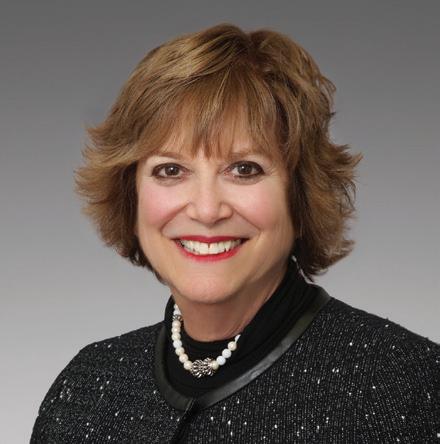
Commissioner
Brendan Johnson, Chair District 4

Commissioner
Angela Powell, Vice Chair District 19
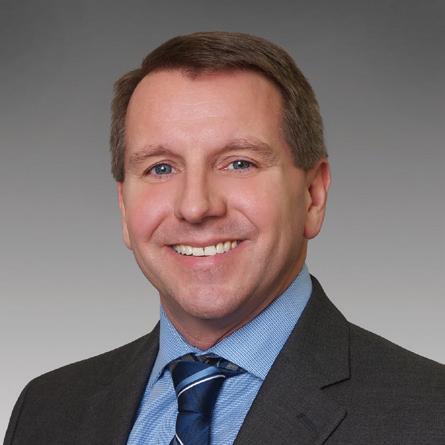
Commissioner
David T. Woodward District 1
Commissioner
Marcia Gershenson District 11
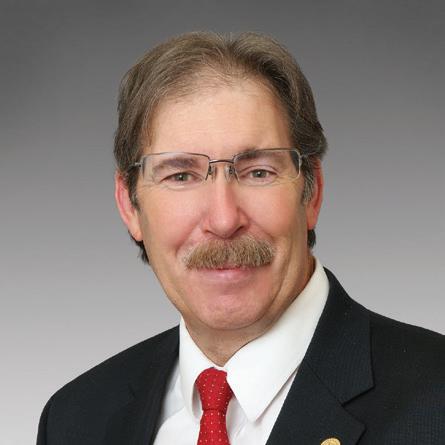
Commissioner
Michael J. Gingell District 6
Commissioner
Philip J. Weipert District 13


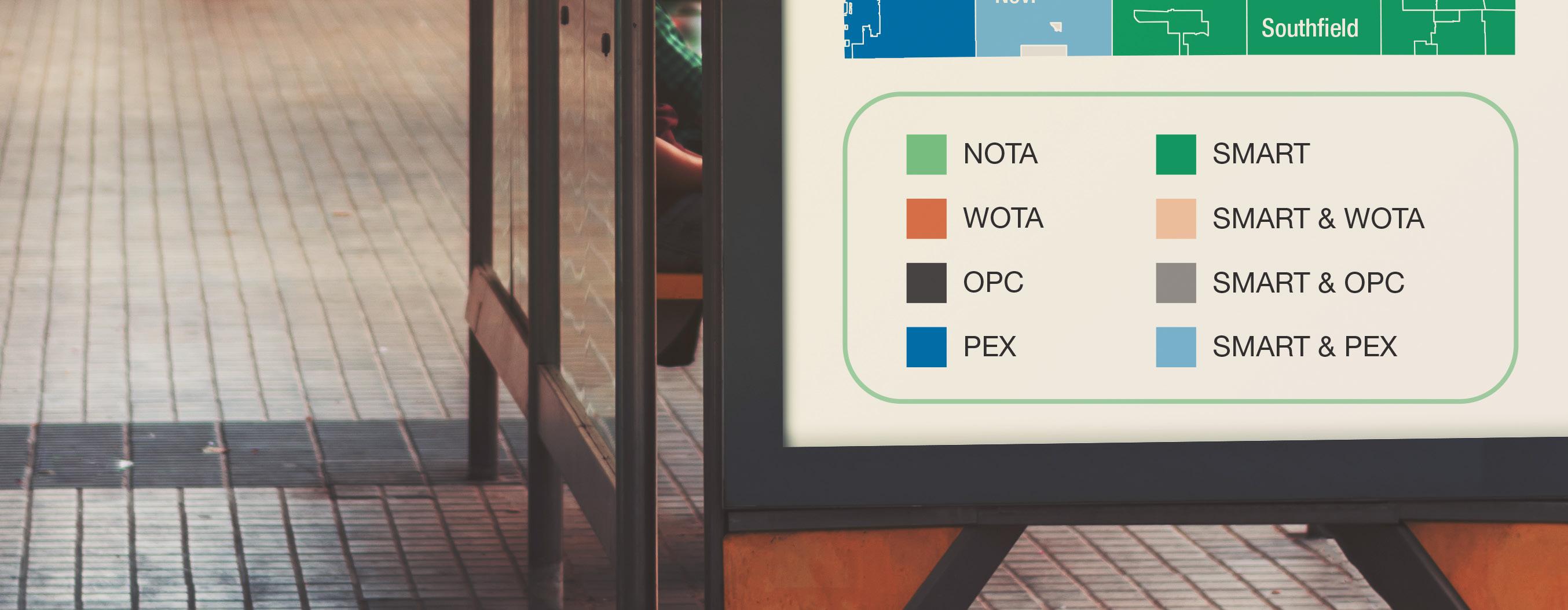
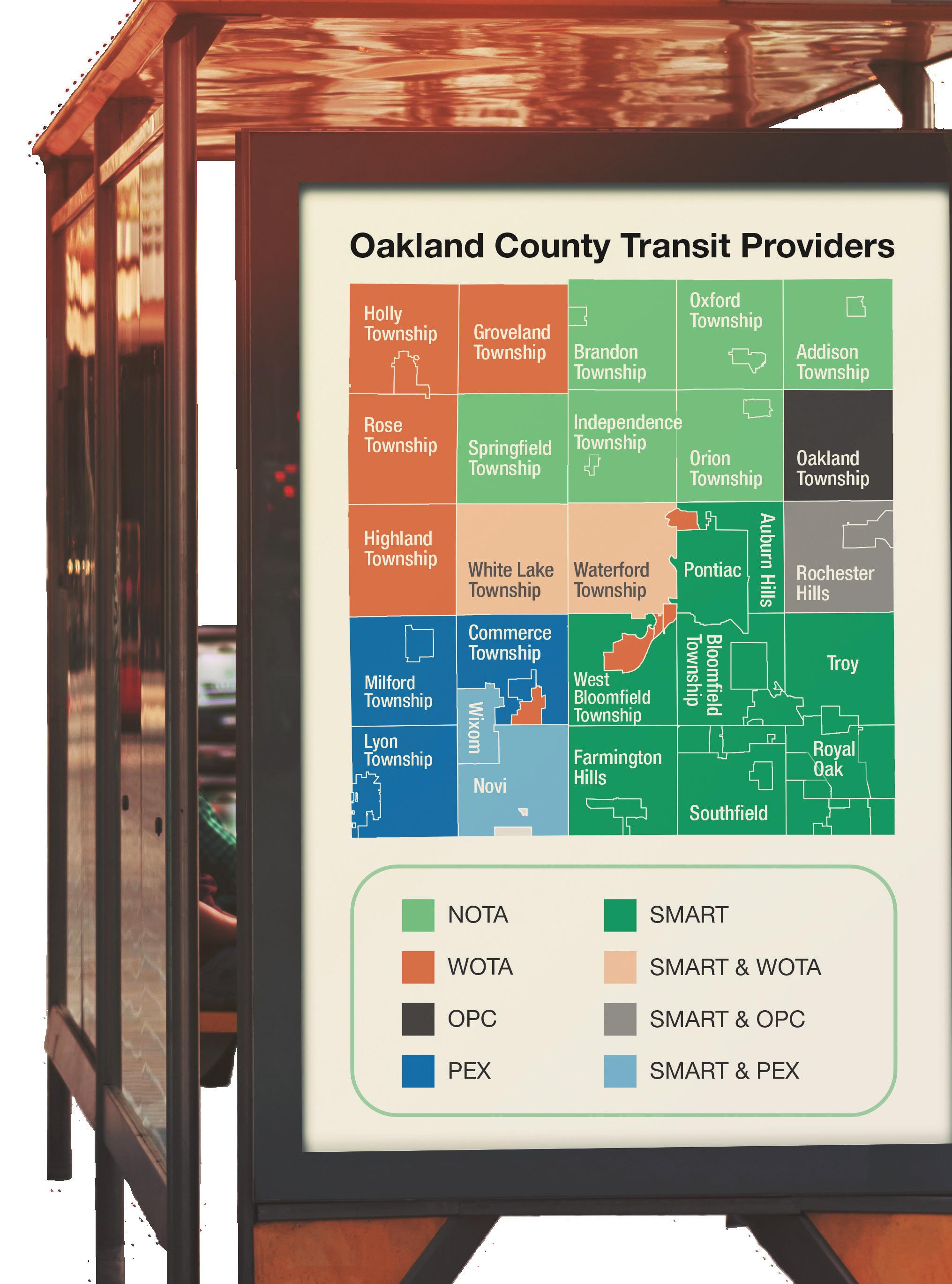
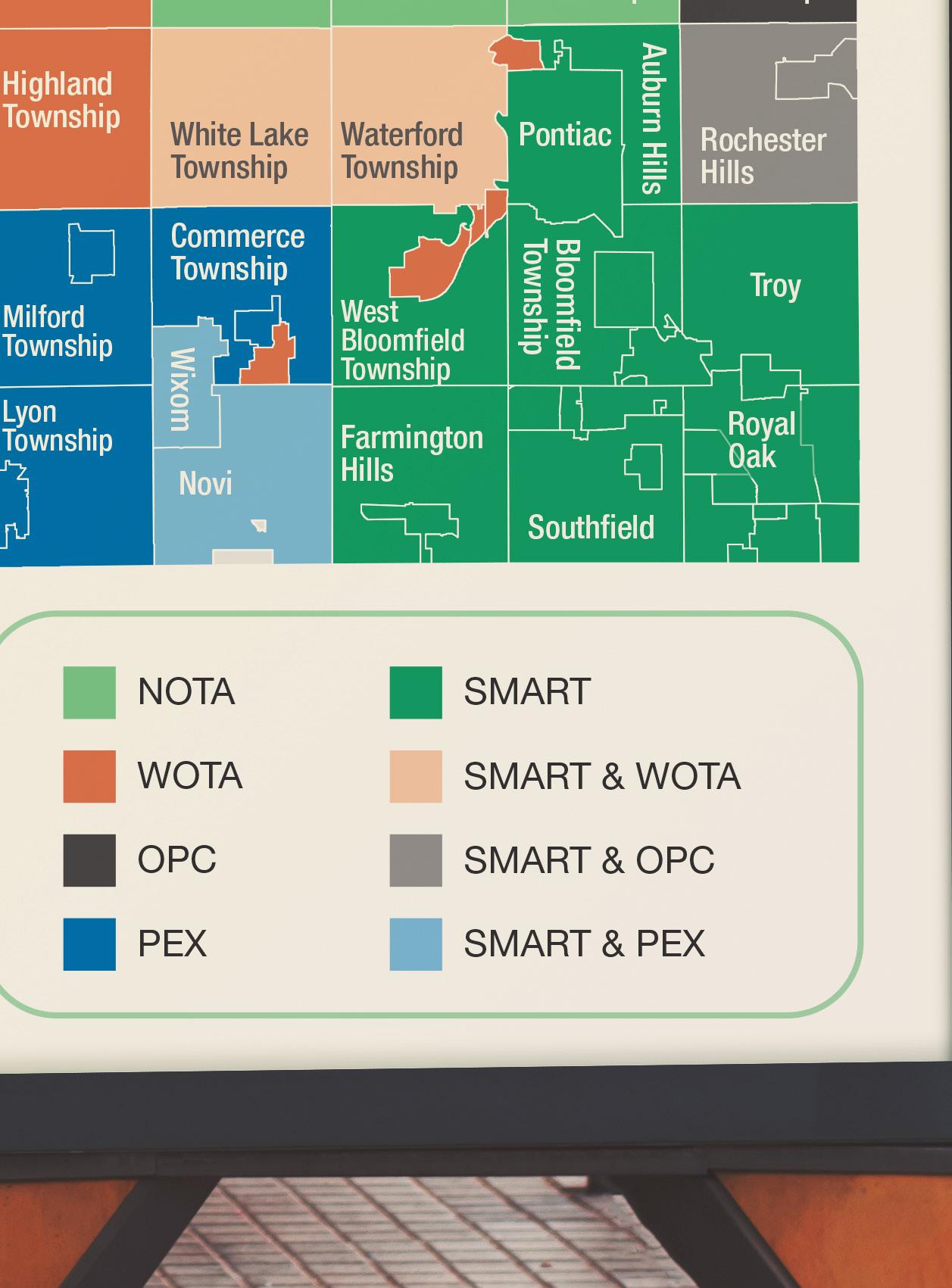
Within Oakland County, there are two primary types of transit providers. The first is the Suburban Mobility Authority for Regional Transportation (SMART) and the second is the Community Transit providers including North Oakland Transportation Authority (NOTA), OPC Social and Activity Center (OPC), People’s Express (PEX) as well as some local transportation programs.



The North Oakland Transportation Authority (NOTA) was established in 2001 through an intergovernmental services agreement between Orion, Oxford, and Addison townships. Until the passage of the Oakland County Public Transportation Millage in 2022 millage, NOTA provided demand-response service to eligible residents of those areas who were veterans, people with disabilities, or people with lower incomes. Following passage of the millage, NOTA’s service area expanded to 217 square miles, including Brandon, Independence, and Springfield townships in addition to the Village of Clarkston. Since June 2024, NOTA has been providing rides to the general public.
NOTA’s eight-member board consists of two members from Addison Township and one member each from Orion Township, Oxford Township, the Village of Lake Orion, the Village of Leonard, Training & Treatment Innovations, and Easterseals MORC. Board members are appointed by their respective townships or organizations and open board meetings are held monthly.
As of September 2024, NOTA had 90 full-time employees, 93% of which were drivers. As of 2024, NOTA offers employees benefits and competitive pay in line with or better than employers in the same industry or area offering similar services.
NOTA’s total 2024 budget was $10,874,654, shown by operating and capital expenses in Table 5 (HNTB 2025).
NOTA provides demand-response transit service to residents of its service area. NOTA’s service area includes Addison, Orion, Oxford, Brandon, Independence, and Springfield townships, in addition to the Villages of Leonard, Lake Orion, Oxford, and Clarkston. Veterans, persons with disabilities, low-income individuals, and those age 55 years or older are eligible for a discounted fare. Fares can be paid with exact change at the time of service, or in advance via cash or check.
Additionally, NOTA operates the Downtown Trolley Express (Trolley), a fixed route service between Downtown Lake Orion and Downtown Oxford. The Oxford DDA and Lake Orion DDA have contracted NOTA since January 2022 to run the Trolley, paying NOTA for driver time, gas, and maintenance of the trolley.
For hours of operation, fares and more information, visit RideNOTA.org.
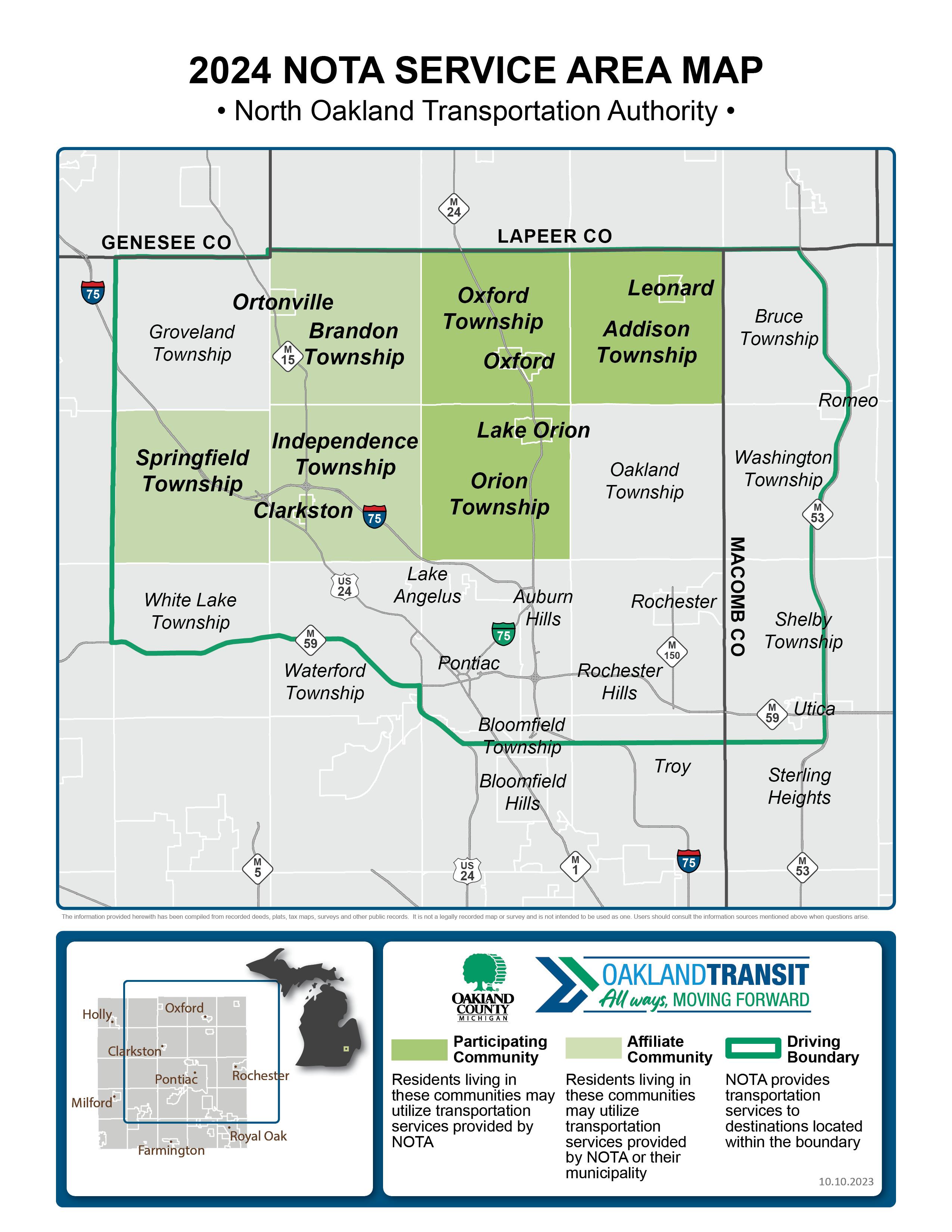
Participating Community
Residents living in these communities may utilize NOTA
Affiliate Community
Residents living in these communities may utilize NOTA or municipality services
Driving Boundary NOTA provides services to destinations within the boundary
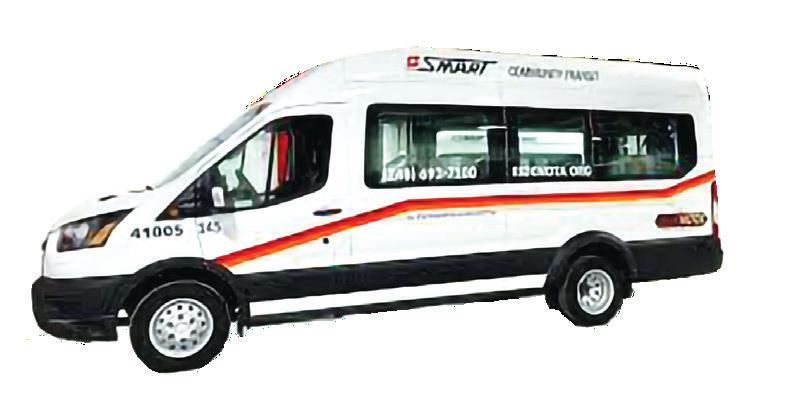
Curb-to-curb small bus/van transportation that riders schedule days in advance. People with disabilities who need additional assistance can receive door-to-door service.
97,042 rides in 2024
97% more rides than 2023
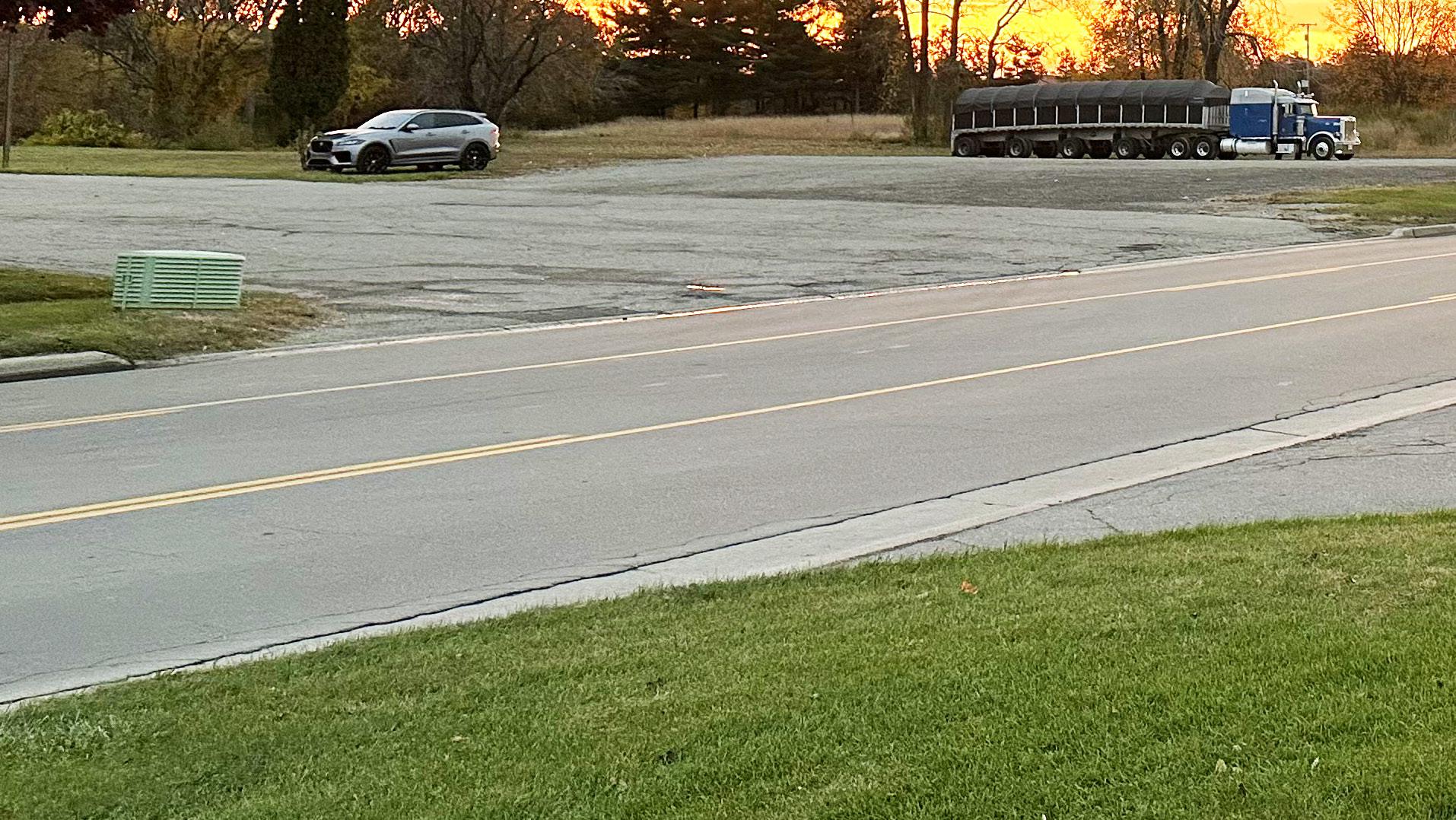

Charming and convenient mode of transportation weaving connecting the hearts of downtown Lake Orion and downtown Oxford.
5,348 trolley rides in 2024
21% less rides than 2023

A total of 61 vehicles are part of NOTA’s fleet as of the fourth quarter of 2024. One of these vehicles is non-revenue, and of the 60 that are revenue vehicles, 98% include lifts. Only two vehicles out of the total fleet use diesel fuel; the rest use gasoline. NOTA has a combined administration and operations facility with directly adjacent fleet parking in Oxford.
Successfully completed a pilot program from March to September, resulting in the permanent replacement of transit services previously provided by Independence Township. Following the pilot’s success, a ten-year agreement was established to serve Independence Township, Springfield Township, and the City of the Village of Clarkston. A satellite office was opened to enhance service coordination and accessibility.
Expanded transit access in June by offering rides to the general population, with a priority on serving seniors, people with disabilities, veterans, and low-income riders.
Recognized for community impact, as NOTA received the 2024 Community Partnership Award from New Horizons Rehabilitation Services for its dedication to improving transportation services. New Horizons Rehabilitation Services, Inc. is a private, not-for-profit rehabilitation agency established in 1964, dedicated to providing quality vocational training and job placement services to individuals facing barriers to employment. Their mission focuses on empowering people with disabilities to achieve their highest level of vocational and social competence.

Did you know?
Among NOTA riders, 36% are persons with disabilities, 15% are age 55 years or older, and 23% are both 55 years or older and persons with disabilities. In 2024, NOTA traveled a total of 649,355 vehicle miles and 46,959 vehicle hours.
Served employment hubs, including Meijer Oxford, Meijer Lake Orion, Meijer Auburn Hills, Kroger Lake Orion, Amazon, Jabil, FedEx, Hoff Engineering, Home Goods, and Goodwill.
32,192
Provided 32,192 worker trips 61 61 jobs were added, including 52 drivers, 8 dispatchers and 1 part time accountant
Vehicle Investments
Purchased 31 Buy America-certified vehicles, including 3 Voyager Minivans, 20 Ford Transits and 8 replacement vehicles leveraging an Enhanced Mobility of Seniors & Individuals with Disabilities (Section 5310) grant – a total investment of $1,942,169.
Facility Investments and Improvements
Expanded the dispatch area to enhance operational efficiency, investing $18,300. Installed an electric gate at the Independence Township facility for improved security at a cost of $14,729. Established a new call center to streamline customer service, with an investment of $18,300. Implemented the QRyde Dispatch Software to optimize scheduling and dispatching, totaling $40,000. Upgraded the system infrastructure with a new server, ensuring improved performance and reliability, with an investment of $11,655.
“Being a NOTA driver means being a loyal steward of the community and a good friend to our fellow neighbors. NOTA is all about empowering and uplifting all of the members of our community, which in turn enriches the entire community. It’s a mission that each and every NOTA driver wears on their heart in the form of the NOTA logo. It’s an honor and a privilege to drive for NOTA. It’s a daily reminder that no one is an island, we all have a part to play and that we all deserve a helping hand sometimes, regardless of the destination.
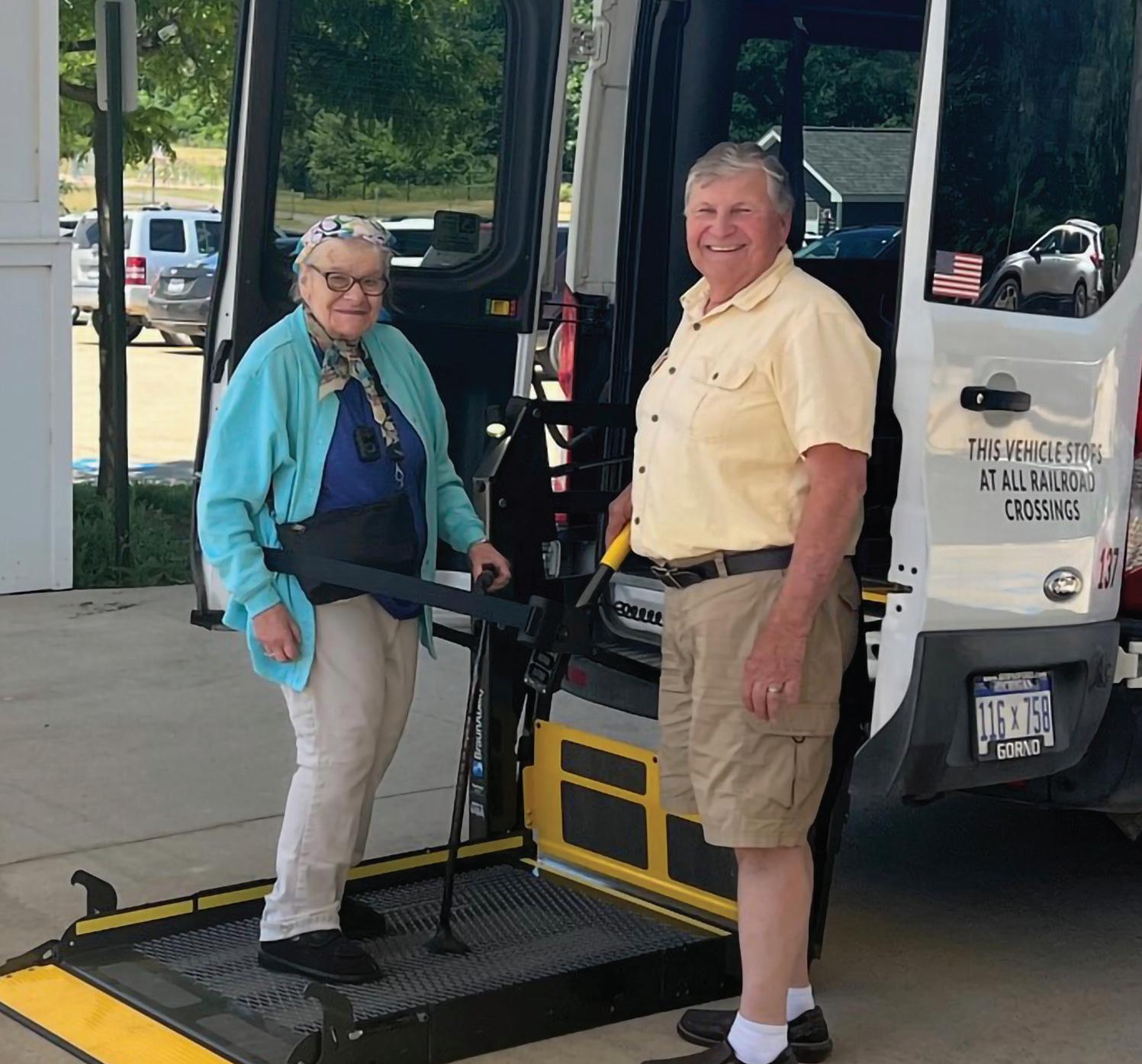

“In 2010, I experienced sudden vision loss, leaving me legally blind. I made the choice to move to the Lake Orion/Oxford area to utilize transportation services through NOTA. I can honestly say that NOTA has not only saved my life, it has afforded me opportunities that changed my life for the better… If it were not for NOTA, I would not be able to maintain employment, and I am so thankful for their invaluable services! The folks at NOTA are like a family and really look out for the residents of Lake Orion/Oxford.
– JULIE, EMPLOYEE AT NEW HORIZONS ”
The 5310 grant is a federal grant program administered by the Federal Transit Administration (FTA). This program provides formula funding to states and designated recipients to meet the transportation needs of older adults and people with disabilities when the transportation service provided is unavailable, insufficient, or inappropriate to meet these needs.
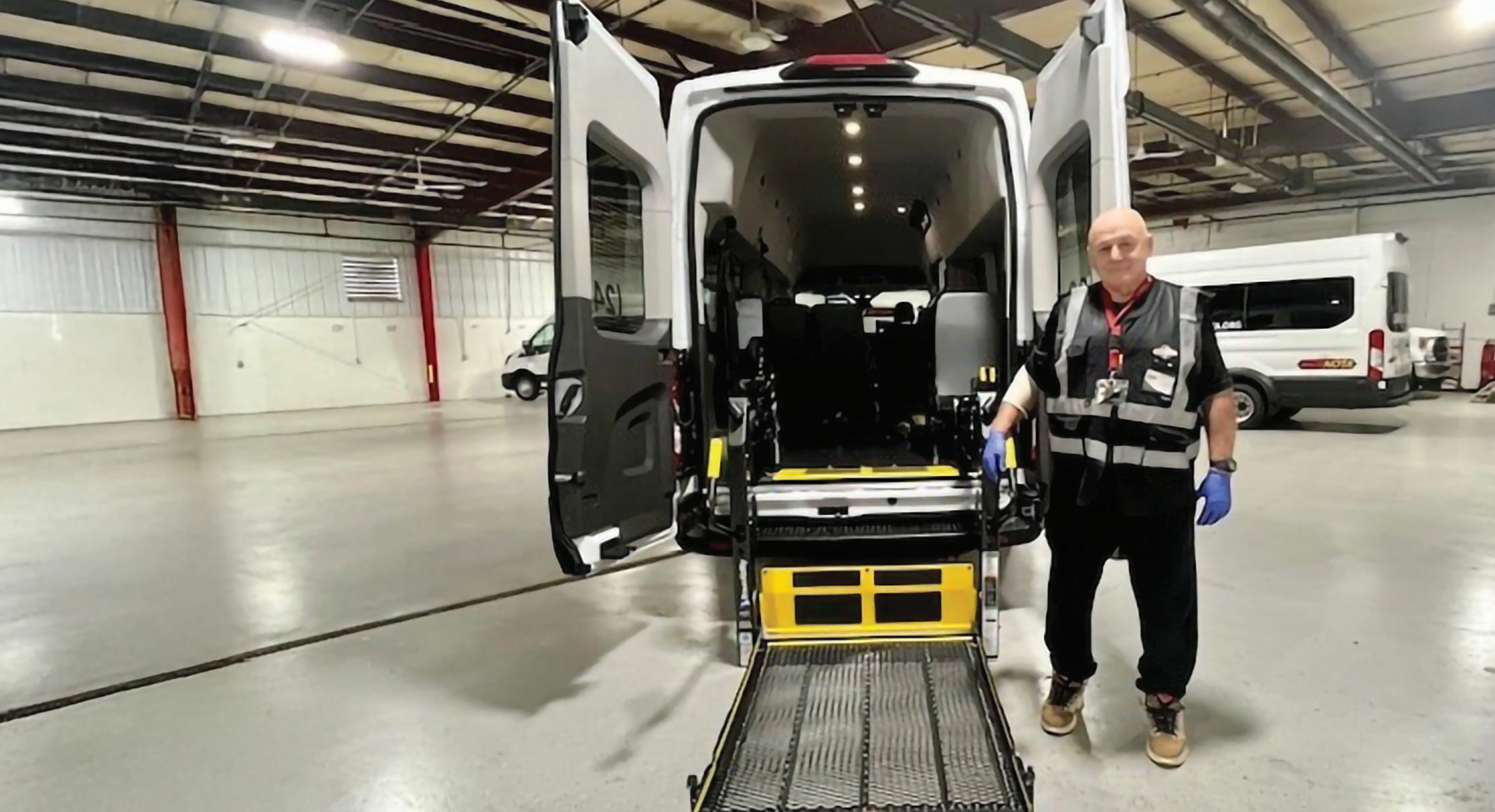

OPC Social and Activity Center’s (OPC) transit service was formally established in 1983 through an interlocal agreement between Rochester Hills, Rochester, and Oakland Township, following the enactment of an operational millage supporting the service. This agreement also includes provisions for service to Oakland University, Beaumont Hospital, and additional medical facilities in Troy and Sterling Heights. OPC provides transit service to residents of their service area who are 55 years and older or under 55 with developmental disabilities. After the passage of the millage, OPC began exploring the possibility of expanding their transit services to the general public.
OPC’s eight-member board consists of elected officials and senior representatives from each jurisdiction in their service area. Two elected officials and two senior representatives represent Rochester Hills, while Rochester and Oakland Township are represented by a pair of one elected official and one senior representative each. Board members are elected or appointed by their respective communities, and open board meetings are held six times a year.
As of September 2024, OPC has 41 full-time employees, 80% of which are drivers. Only a few OPC drivers are full-time and most are retired seniors.
OPC’s 2024 transportation budget was $3,800,925, shown by operating and capital expenses in Table 6 (HNTB 2025).
TABLE 6: OPC 2024 Budget Breakdown
OPC provides demand-response transit service to qualified residents of its service area, which includes Rochester Hills, Rochester, and Oakland Township. Residents 55 years and older or under 55 with developmental disabilities who are OPC members qualify for OPC transit services. OPC’s driving area includes Oakland University, Corewell Hospital, and additional Beaumont and other medical facilities in Troy and Sterling Heights.
For hours of operation, fares and more information, visit OPCCenter.org.
Among OPC riders, 21% are persons with disabilities, 58% are age 55 years or older, and 21% are both 55 years or older and persons with disabilities. In 2024, OPC traveled 210,113 vehicle miles and 20,467 vehicle hours

Participating Community
Residents living in these communities may utilize OPC services
Driving Boundary
OPC provides services to destinations within the boundary
Additional Destinations
OPC also provides services to select medical facilities in these communities


Curb-to-curb small bus/van transportation that riders schedule days in advance. People with disabilities who need additional assistance can receive door-to-door service.
52,839 rides in 2024 22% more rides than 2023
A total of 33 revenue vehicles are part of OPC’s fleet as of the fourth quarter of 2024, 94% of which are equipped with lifts. Three of the 30 revenue vehicles use diesel fuel; the rest use gasoline.
Following the passage of the millage, OPC quickly outgrew their space at the OPC Social and Activity Center as ridership continued to increase. Due to their immediate need for more administrative and parking space, in September 2024 OPC moved their transit administration and operation facility out of the OPC Social and Activity Center building to a new building in Rochester.

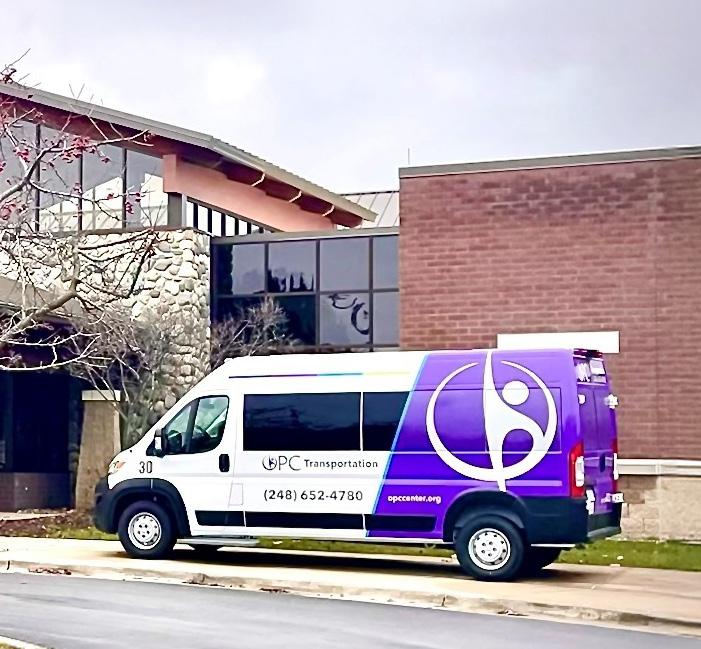
Expanded service hours to better accommodate riders, with weekday operations running from 6:30 a.m. to 8:00 p.m. and the addition of Sunday service from 8:00 a.m. to 2:00 p.m.
Increased access to medical appointments by expanding service areas to include Pontiac, Lake Orion, Clarkston, Madison Heights, Troy, Sterling Heights, Royal Oak, and Bloomfield Hills.
Established a transition process to connect riders with alternative transportation providers, including NOTA, WOTA, SMART ADA, and PEX, ensuring access to destinations beyond OPC’s service area.
Vehicle Investments
Purchased 4 Buy America-certified vehicles –a total investment of $177,800.
Facility Investments and Improvements
OPC secured a lease in a new building with garage facilities in collaboration with local firm Rewald Construction.
“I love my job and OPC Transportation helps me get there every day. The drivers are friendly and nice to me. They always get me to work on time.”
Served employment hubs, including Meijer Rochester Hills, Kroger Rochester Hills, Kroger Rochester, and OPC Rochester.
5,711
Provided 5,711 worker trips
7 7 jobs were added, including 6 drivers, and 1 dispatcher.
“I love helping people in need. This job gives me a purpose and puts a smile on my face. This job makes me grateful for the independence that I have.”

Previously a specialized service program that was part of Northfield Human Services, People’s Express (PEX) was established as a stand-alone nonprofit agency in 2007. PEX provides transit services in four counties: Livingston, Washtenaw, Wayne, and Oakland. Until the passage of the 2022 millage, PEX provided demandresponse service to residents of Commerce Township, Lyon Township, Milford Township, Milford, South Lyon, Wolverine Lake, and Wixom under separate contracts with each community, and travel was limited to trips within each community. After the passage of the millage, while still prioritizing senior, veteran, disabled, and low-income residents, PEX expanded its driving boundary and hours of operation for all the Oakland County communities it served pre-millage and enabled residents of any PEX community to travel to any of the others. In July 2024, PEX added the City of Novi to its service area.
PEX is governed by a seven-member board consisting of local volunteers. The same board governs Northfield Human Services (NHS). Board meetings are held monthly.
As of September 2024, PEX has 63 full-time employees, 81% of which are drivers, who provide services to all communities PEX serves, not just those in Oakland County.
PEX’s 2024 Oakland County budget was $8,024,680, shown by operating and capital expenses in Table 7 (HNTB 2025).
TABLE 7: PEX 2024 Budget Breakdown
In Oakland County, PEX provides demandresponse transit service to residents of its service area, which includes Commerce, Lyon, and Milford townships, the Cities of Novi, South Lyon, and Wixom, and the Villages of Milford and Wolverine Lake. Riders are picked up within PEX’s service area and can travel to destinations outside the service area that are within PEX’s driving boundary.
For hours of operation, fares and more information, visit PeoplesExpressMi.com.
Among PEX riders, 5% are persons with disabilities, 30% are age 55 years or older, and 10% are both 55 years or older and persons with disabilities. In 2024, PEX traveled a total of 306,889 vehicle miles and 19,470 vehicle hours.
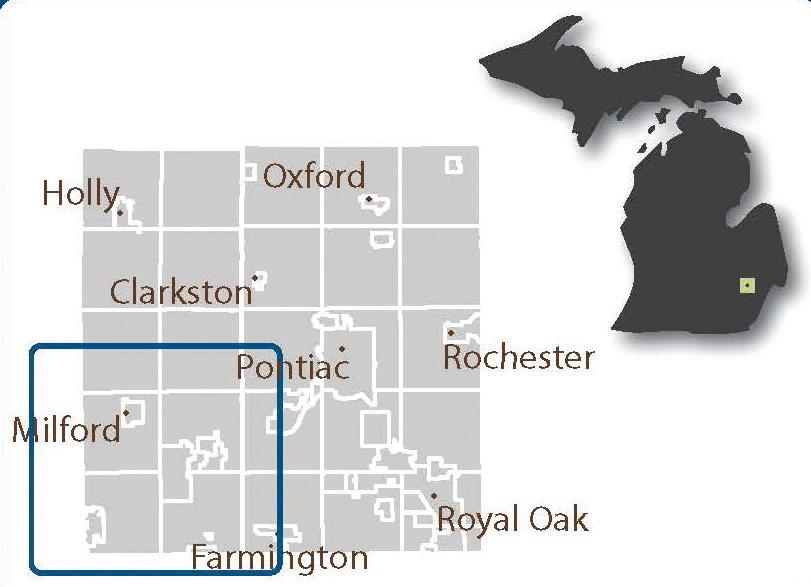
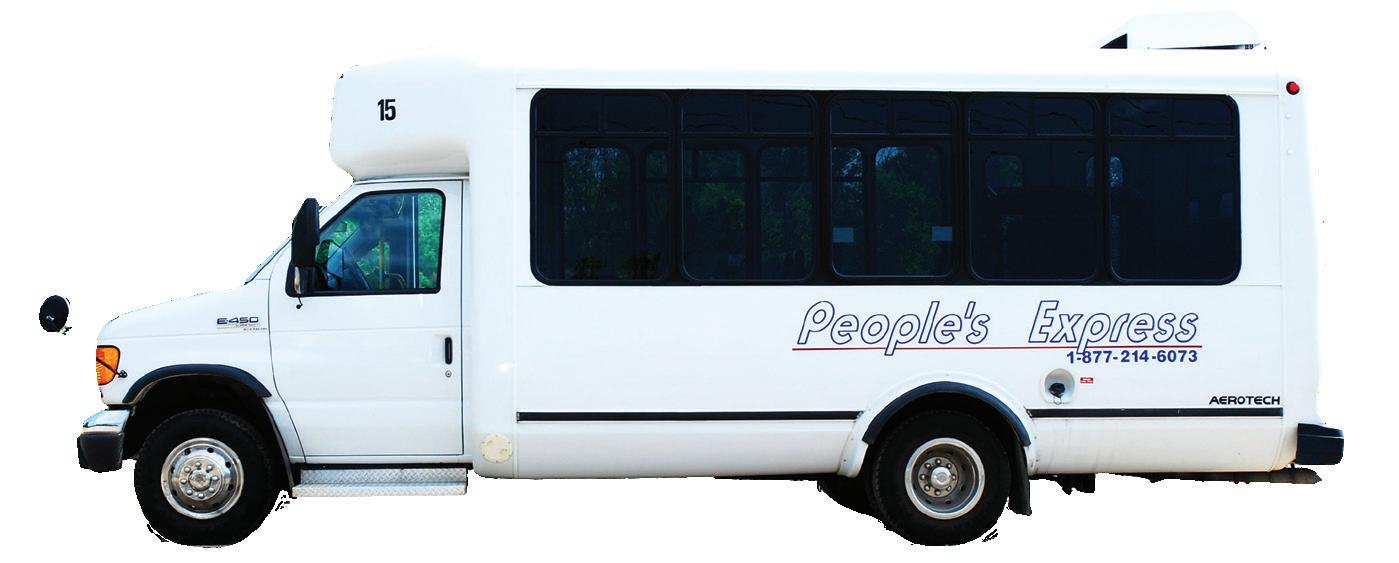
Curb-to-curb small bus/van transportation that riders schedule days in advance. People with disabilities who need additional assistance can receive door-to-door service.
55,990 riders in 2024
129% more rides than 2023
PEX’s Oakland County fleet includes a total of 30 revenue vehicles as of the fourth quarter of 2024, all of which are equipped with lifts and use gasoline fuel. PEX’s primary facility is located in Whitmore Lake. As PEX provides services in multiple other counties, PEX has fleet parking facilities in Whitmore Lake and Novi.


Expanded service to the City of Novi on July 1, 2024, officially adding it as a Participating Community. This expansion provided Novi residents with the same reliable transportation options available in other service areas, ensuring access to key destinations. The impact was immediate—ridership among Novi residents increased by 76.4% in July 2024 compared to July 2023.
Additionally, overall ridership in Q1 2024 saw a 95% increase compared to Q1 2023, demonstrating strong demand and positive reception of this new service.
Extended morning service hours on both weekdays and weekends to better accommodate passengers with critical medical needs, such as early morning dialysis appointments. This expansion also benefited individuals working beyond the traditional 9-to-5 schedule, increasing access to reliable transportation. The additional availability contributed to overall ridership growth and reinforced our commitment to accessible transit.
Achieved a 192% increase in total ridership, rising from 19,180 in 2023 to 55,990 in 2024, following service expansions, including the Novi addition and extended hours. This growth reflects the increasing utilization of transit services and the expanding reach of our network.
Vehicle Investments
Purchased 21 Buy America-certified vehicles – a total investment of $1,850,899.
17,126
Provided 17,126 worker trips
Served employment hubs, including Suburban Collection Showplace of Novi, Kroger South Lyon and Fox Run Senior Living Community Novi.
36 36 jobs were added, including 24 drivers and 6 dispatchers, as well as one new position in each of the following roles: Human Resources Coordinator, Human Resources Assistant, Oakland Coordinator, MDOT Coordinator, and Social Media/Marketing Coordinator.
“My experience with People’s Express is awesome, I love it, I have a rare eye disease that makes me legally blind where I can’t drive. The drivers are very timely, and the operators are timely about calling me to confirm my [appointments] every day and when the driver arrives. Without People’s Express, I would not be able to go to and from work. I would be more restrictive with where I can work, and I would not be as financially stable.”
–PEX RIDER, MATRIX QUALITY SERVICES EMPLOYEE
“My favorite thing is helping people, whether it’s getting them to work or to important doctor’s appointments. When I first started picking up Leya Crane, she needed a walker, and I had to assist her from her apartment, into the vehicle, and into the building for her appointments. Over time, she no longer needed the walker. People’s Express is a great company that has provided me with a good job. It’s important to be a people person—showing compassion, sympathy, and empathy—and to be willing to go the extra mile.”
–PEX DRIVER

SMART (Suburban Mobility Authority for Regional Transportation) has been a cornerstone of public transit in Southeast Michigan for decades, providing fixed-route and paratransit services across Oakland, Macomb, and Wayne counties. Until the passage of the 2022 transit millage, SMART operated a limited set of fixed routes and demand-response services in Oakland County, with several communities opting out of the system. However, with the countywide transit millage, SMART’s service area expanded significantly, ensuring broader access to transit for residents throughout the county.
SMART is governed by a seven-member board, with representatives appointed by the elected leadership of Oakland, Macomb, and Wayne counties, as well as the City of Detroit. These representatives work together to oversee SMART’s operations and strategic planning to ensure transit services remain responsive to the needs of residents. Board meetings are open to the public and held monthly.
As of December 2024, SMART employs more than 700 full-time employees, with approximately 85% serving as bus operators and mechanics. To keep pace with increased ridership and expanded routes, SMART has hired additional drivers, dispatchers, and customer service representatives since the passage of the millage.
SMART’s total 2024 budget was $301,800,000, distributed across operating and capital expenses as outlined in Table 8.
TABLE 8: SMART 2024 Budget Breakdown
SMART provides fixed-route, demandresponse, and FLEX transit services across Oakland County, offering reliable, accessible transportation for people of all ages and abilities. Fixed routes operate along major corridors, connecting destinations like downtown Detroit, employment hubs, medical centers, and shopping districts. Connector and ADA paratransit services offer curb-to-curb rides for seniors and individuals with disabilities.
Since April 2024, SMART has expanded service with new routes like Route 492 (Rochester Road), an extended Route 790 (Pontiac Crosstown), and Route 759 (Highland Road), improving access to jobs, retail, and healthcare. FLEX, an on-demand service similar to ride-hailing, remains available in designated zones.
Many Oakland County communities also run local transit programs—such as senior shuttles and paratransit—using SMART municipal credits through Act 51, further enhancing mobility.
SMART’s coverage includes Oakland University, Corewell Hospital, and other key sites. Fixed-route buses run seven days a week; Connector and ADA rides must be scheduled at least one day in advance. Veterans ride free.
For hours of operation, fares and more information, visit SMARTBus.org

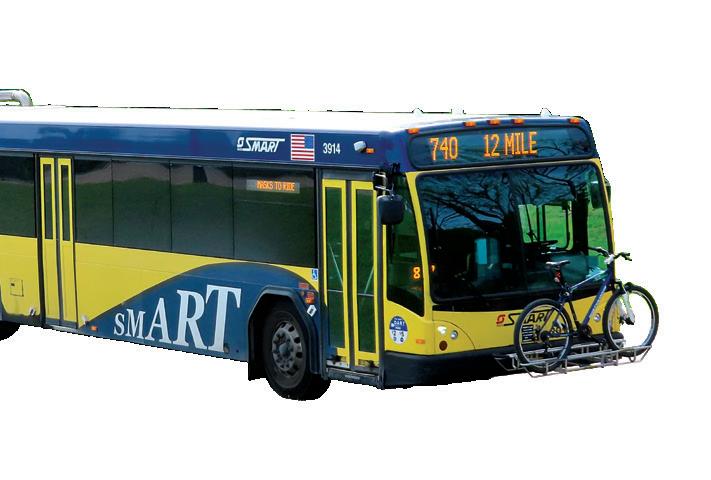
Big buses that run on specific routes on a set schedule and stop at specific locations marked as bus stops.
7,034,727 rides in 2024 8.6% more rides than 2023

Curb-to-curb small bus/van transportation that riders schedule days in advance. People with disabilities who need additional assistance can receive door-to-door service.
211,230* rides in Oakland County 2024 9.6% more rides than 2023

Curb-to-curb minivan transportation that riders can hail on-demand or schedule in advance within specific zones. People with disabilities who need additional assistance can receive door-to-door service.
228,668 rides in Oakland County in 2023 5.19% less rides than 2023
*The ridership data presented includes total unlinked passenger trips for fixed-route services and total trips across the system for both fixedroute and demand response services. The methodology and vehicle count data was sourced from SMART’s Grant Management Team.
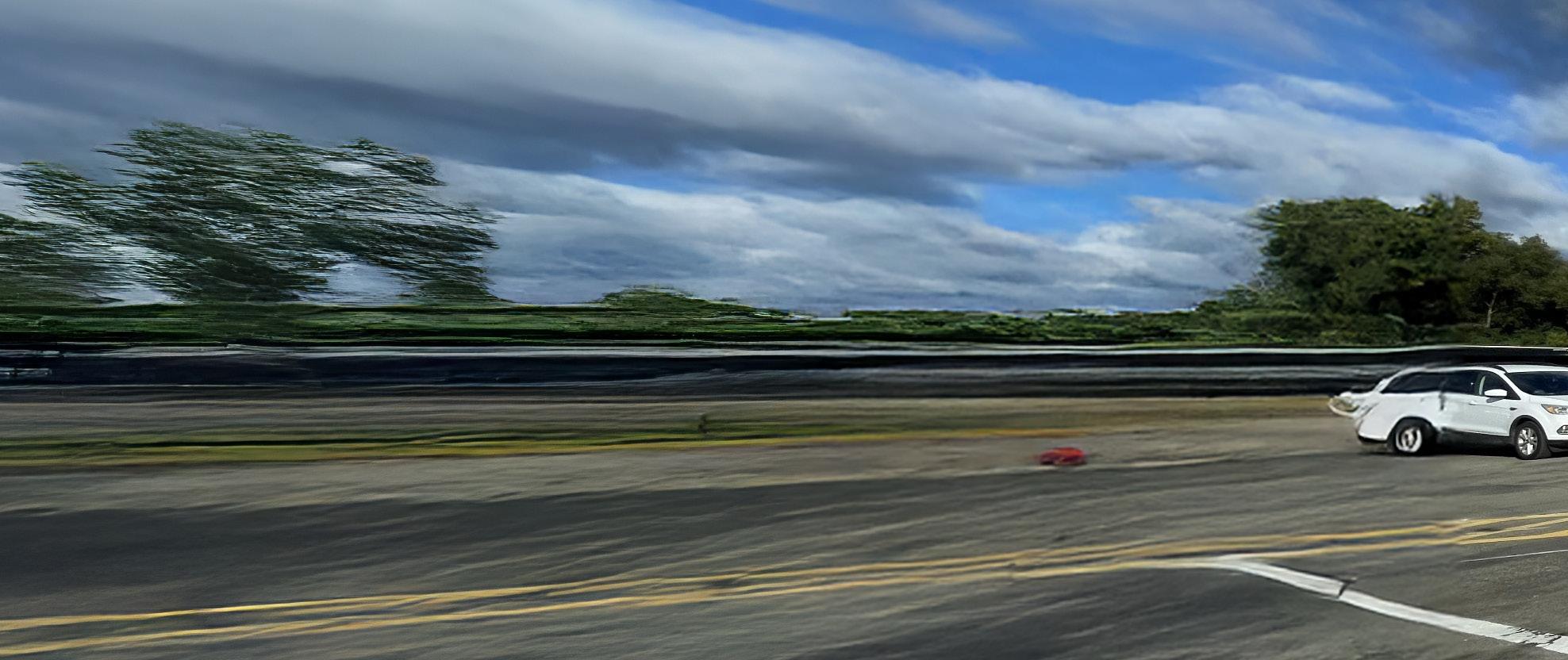

As of late 2024, SMART operates 258 fixed-route buses and 487 transit vans for paratransit and community services across Oakland County. Most vehicles include accessibility features like lifts and ramps. SMART is transitioning to more fuel-efficient, eco-friendly vehicles and maintains multiple facilities, including its primary Oakland County hub in Troy, to support daily operations.
Launched Route 492 - Rochester, providing service along the Rochester Rd corridor and connecting the communities of Auburn Hills, Rochester, Rochester Hills, Troy, Madison Heights, Clawson, Royal Oak, and Ferndale.
Introduced Route 759 - Highland, serving the Highland Rd/M-59 corridor and expanding transit access to Auburn Hills, Pontiac, Waterford Township, and White Lake Township.
Extended service on key routes, including Route 305 - Grand River, Route 740Twelve Mile, and Route 805 - Grand River Park & Ride, continuing services in the communities of Novi and Wixom.
Expanded service hours and improved routing across multiple routes to better serve key destinations throughout the county.

Did you know?
Among SMART’s demandresponse riders, a significant portion are individuals with disabilities and seniors who rely on these services for access to medical care, employment, and daily needs. In 2024, SMART traveled approximately 2,534,601 vehicle miles and 181,631 vehicle hours, continuing its mission to provide safe, reliable, and efficient transit across Oakland County.
Served employment hubs, including Corewell Health locations in Royal Oak, Troy, and Southfield; Amazon, Stellantis, and UWM facilities in Pontiac and Auburn Hills; and regional shopping centers such as Oakland Mall, Somerset Collection, Twelve Oaks Mall, and Great Lakes Crossing.
1,420,396
Provided 1,420,396 worker trips
305 jobs were added, including 295 drivers (170 fixed-route and 125 connector), 4 dispatchers, and 6 mechanics.
CAPITAL EXPENDITURES
Vehicle Investments
Purchased 59 Buy America-certified vehicles –a total investment of $6,604,772.
Facility Investments and Improvements
Developed a dedicated bus lane for Park & Ride at the Wixom Carpool Lot in partnership with MDOT, with a total investment of $239,000.
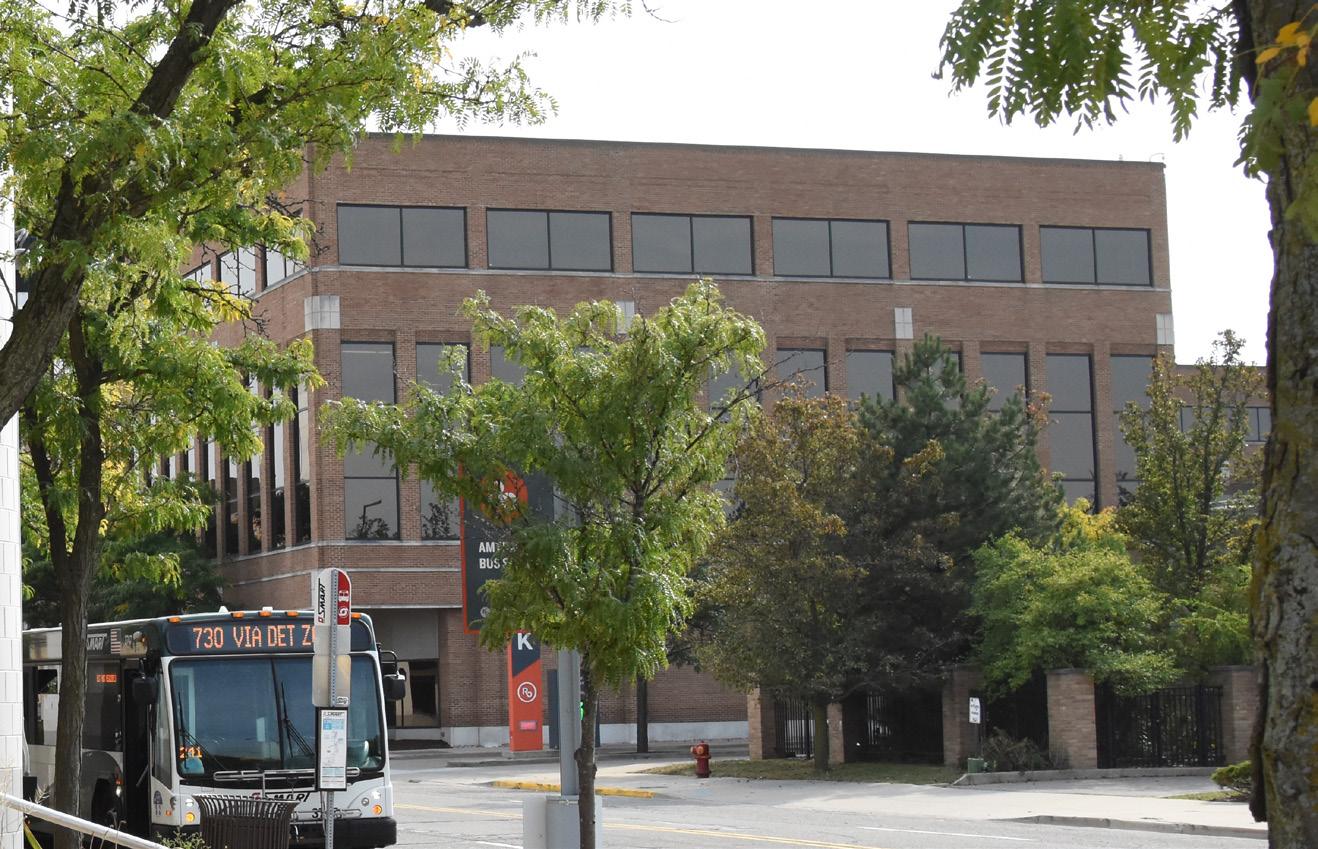

“Before I became a manager, I took the bus for 8 years. SMART helped me a lot. Without them, I couldn’t be where I am today. It’s a big part of me. Now I use it for my employees to get here for me. I cannot run a business without my employees, and their biggest concern sometimes is how they’re going to get here. With confidence I can tell them, I got you, SMART bus got you. Get a job, get a ride and you don’t have anything to worry about.”
“The most important thing is customer service. I’m a people person. I love to drive. It’s helping people, even if you’re a dime short on the fare or need someone to talk to, I’m that type of driver. SMART is a great opportunity for the young or the old.”
– WILL, SMART FIXED ROUTE BUS OPERATOR



Western Oakland Transportation Authority (WOTA) was established in January 2020 through an interlocal agreement between Highland, Waterford, and White Lake townships in addition to the City of Walled Lake. Until the passage of the 2022 millage, WOTA provided demand-response service to those who qualified based on residency in these townships or City and senior, veteran, disability, or low-income status. After the passage of the millage, WOTA’s service area expanded to include Groveland, Holly, and Rose townships, the Cities of Keego Harbor, Lake Angelus, Orchard Lake, and Sylvan Lake, and the Village of Holly.
As a governmental agency, WOTA’s seven-member board consists of representatives from various communities in the WOTA service area including Highland Township, White Lake Township, Waterford Township, and the City of Walled Lake, and one ADA advisor and one Senior advisor. In 2024, WOTA’s board added an additional member to represent the interests of Holly, Rose, and Groveland townships in addition to the Village of Holly. Open board meetings are held monthly.
As of September 2024, WOTA has 40 full-time employees, 65% of which are drivers. An additional 44 members of WOTA’s staff are part-time employees.
WOTA’s 2024 budget was $8,269,430, shown by operating and capital expenses in Table 9 (HNTB 2025).
TABLE 9: WOTA 2024 Budget Breakdown
WOTA provides demandresponse transit service to residents of its service area, which includes Groveland, Highland, Holly, Rose, Waterford, and White Lake Townships, the Cities of Keego Harbor, Lake Angelus, Orchard Lake, Sylvan Lake, and Walled Lake, and the Village of Holly. Riders are picked up within WOTA’s service area and can travel to destinations outside the service area that fall within WOTA’s driving boundary. Veterans, persons with disabilities, low-income individuals, and those age 55 years or older are eligible for a discounted fare.
For hours of operation, fares and more information, visit RideWOTA.org.
Among WOTA riders, 21% are persons with disabilities, 41% are age 55 years or older, and 32% are both 55 years or older and persons with disabilities. In 2024, WOTA traveled a total of 495,878 vehicle miles and 32,068 vehicle hours.

Participating Community
Residents living in these communities may utilize WOTA
Driving Boundary
WOTA provides services to destinations within the boundary
Additional Destinations
Residents of the Village of Holly, Groveland
Holly Twp and Rose Twp may also travel to these additional destinations as needed

Curb-to-curb small bus/van transportation that riders schedule days in advance. People with disabilities who need additional assistance can receive door-to-door service.
79,685 rides in 2024 60% more rides than 2023
WOTA’s fleet includes a total of 58 revenue vehicles, 98% of which are equipped with lifts. WOTA’s primary facility is in Highland. All WOTA vehicles use gasoline fuel and are fueled at any gas station available using WEX cards.
A WEX card is a fleet fuel card that businesses, government agencies and organizations use to manage fuel and other vehicle-related expenses.
Vehicle Investments
Purchased 24 Buy America-certified vehicles, along with 24 camera systems and 12 minivan Q’Straint upgrades to enhance safety and accessibility – a total investment of $2.4 million.
A Q’Straint upgrade refers to an enhancement or installation of Q’Straint wheelchair securement systems, which are designed to safely secure passengers using wheelchairs or mobility devices in vehicles.
Facility Investments and Improvements
Invested $5,000 in air conditioning improvements for a WOTA-occupied building, enhancing comfort and accessibility for staff and riders.
Expanded service availability to seven days a week across all 12 communities, ensuring greater accessibility for riders.
Increased service eligibility to include all residents aged 18 and over, with priority given to specialized service populations.
Enhanced regional connectivity by coordinating cross-over trips with other Oakland County transit providers, allowing riders to reach destinations beyond WOTA’s travel boundaries.
Successfully launched the “This Ride is On Us” program in partnership with Oakland County Veterans’ Services, providing free transportation for veterans. The program was highly successful, with WOTA providing 57% of the delivered services.
“I really like using our public transportation (WOTA) for rides to and from work. The bus drivers are on time, dependable and very kind to me.”
– ERIK, EMPLOYEE AT FOX RUN SENIOR LIVING COMMUNITY NOVI
“As a driver, I see how important public transportation is for our nondriving populations. It’s more than just getting someone to their destination. It’s being connected to their community and others.”
– JUDY, WOTA
ROADRUNNER/DRIVER
Served employment hubs, including Meijer (various), Kroger (various), Fox Run Senior Living Community Novi, Culver’s Waterford and Huron Valley Council for the Arts Highland.
27,529
Provided 27,529 worker trips 30 30 jobs were added, including 25 drivers, 4 dispatchers and 1 Finance Manager.
Did you know?
In public transportation, roadrunner often refers to a bus service catering to rural or suburban areas with paratransit or ondemand services.


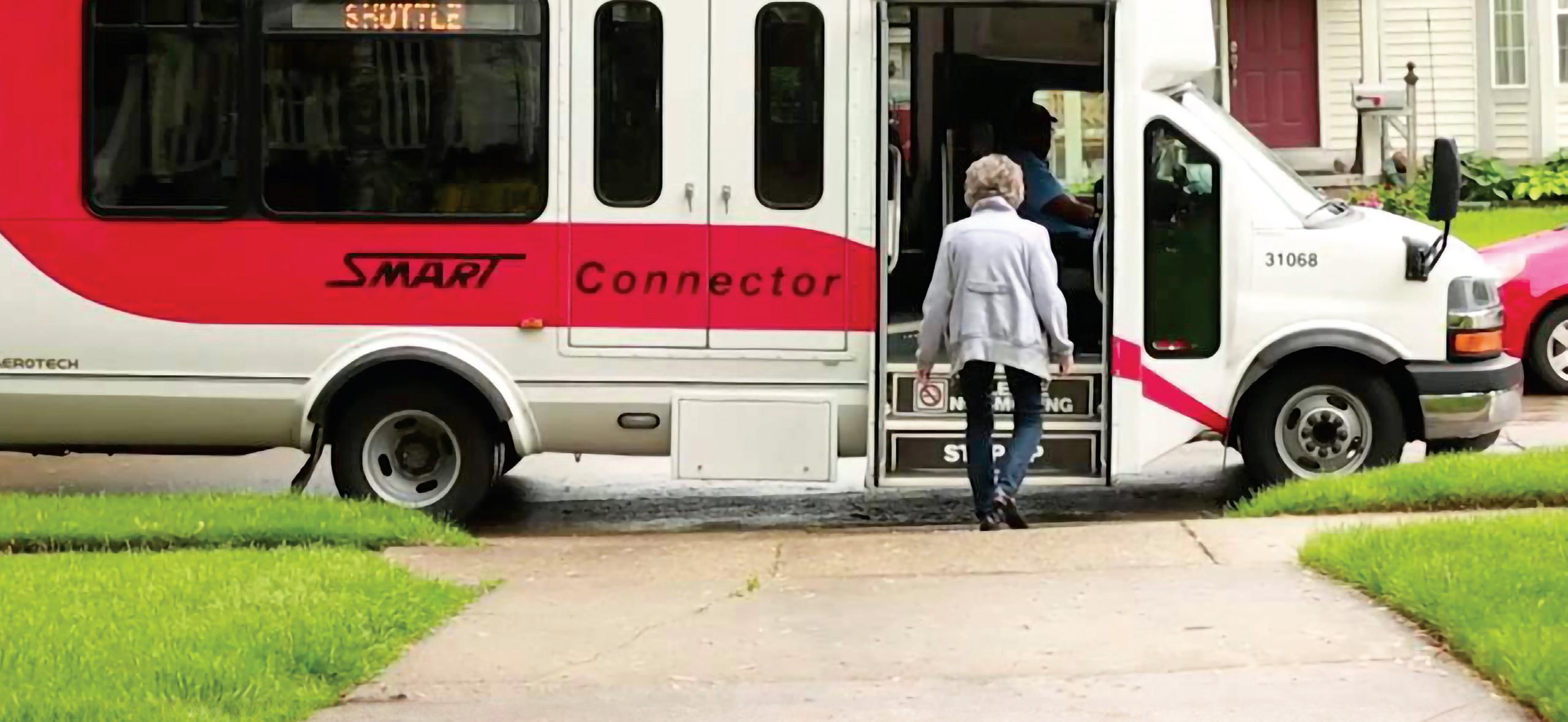
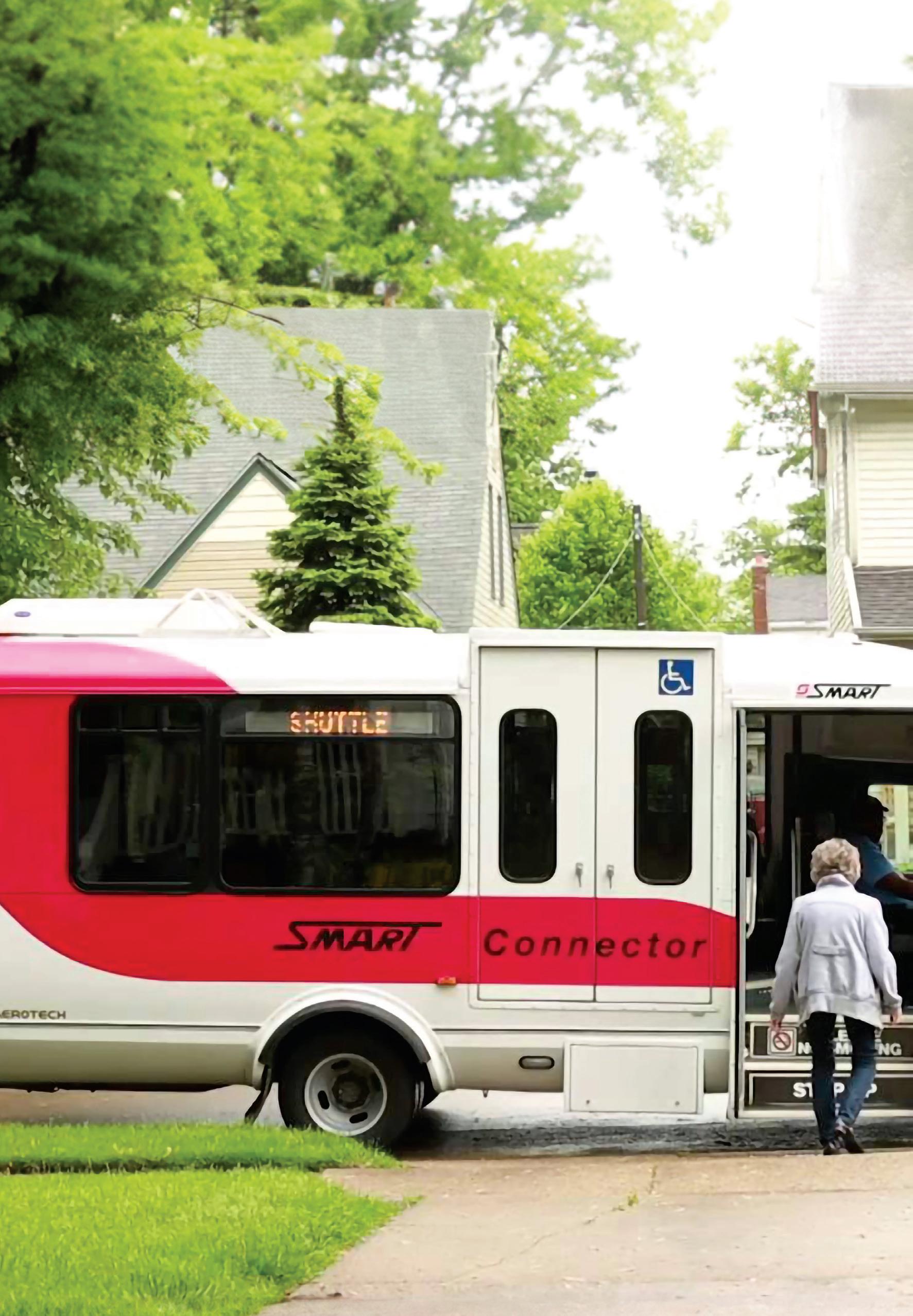
Throughout the year, the Oakland Transit team played a key role in shaping the future of transit in the region through joint, comprehensive planning efforts. Collaborating with local municipalities, transit providers, and community stakeholders, the team worked to enhance service efficiency, expand mobility options, and ensure seamless connectivity across Oakland County. These planning initiatives focused on identifying transportation gaps, optimizing resources, and developing long-term strategies to improve accessibility for all residents.
The following highlights key planning efforts that took place over the past year, reinforcing our commitment to a more inclusive and reliable transit system.
Commissioned by Oakland Transit and produced by HNTB, the Community Transit Plan (CTP) will serve as a roadmap for the future of transit services provided by NOTA, WOTA, OPC, and PEX. Building on the momentum of the 2022 Oakland County Public Transportation Millage, the plan outlines strategies to enhance mobility, expand service coverage, and improve accessibility for all residents.
The Community Transit Plan documents existing conditions, reviews current industry practices, and summarizes input gathered from engagement with the public and key stakeholders to develop strategies and recommendations that form a planning framework. That framework will guide future growth and service improvements in Oakland County’s CTP study area (HNTB 2025).
The project team utilized a combination of inperson and virtual meetings, online marketing, and grassroots initiatives to maximize reach and encourage higher attendance at meetings and surveys. Special attention was given to engaging underserved and low-income populations through targeted outreach to local nonprofits, faith-based organizations, and community leaders (HNTB 2025).
As part of the effort, the team:
• Received over 900 survey responses from community members
• Organized 5 pop-up events to engage with the public
• Facilitated 5 focus group meetings for in-depth discussions on transit needs
• Hosted 2 public meetings, drawing 78 attendees to provide input
• Connected with residents through local newspapers and social media to expand outreach.
Conducted interviews with each transit provider to understand existing conditions, opportunities, and challenges
Analyzed demographic and travel data to identify activity centers, areas with transit demand, and potential service improvements
Collected feedback from stakeholders and the public on service goals for transit in Oakland County
As a continuation of this planning effort, in 2025 the team will develop service options, collect feedback from the public on preferred services, and outline the next steps toward implementation.
SMART launched the SMARTer Mobility Study in early 2023 to evaluate its fixed-route/ADA services, connector general service, and micro transit pilot program, while aiding in the evaluation and analysis of services within the region. Anticipated to conclude in December of 2025, the study will provide recommendations for the future of SMART’s fixed route system and Flex service.
Round One
Community input has played a crucial role in informing the SMARTer Mobility Study. In round one of the public engagement process, SMART conducted rider surveys, pop-ups, public meetings, and transit focus groups, online surveys and stakeholder meetings.
Round Two
Building on insights gathered in the first round, SMART continued its public engagement efforts with a second round that resulted in their team:
• Gathering 593 comments through public meetings, website surveys, emails, direct messages, and social media.
• Holding 18 community and stakeholder meetings to gather insights and feedback.
• Organizing 10 pop-up events to engage with residents in key locations.
• Hosting 5 public meetings to share information and collect input.
• Convening 3 meetings with municipal and elected officials, one for each county.
• Facilitating 2 meetings with community partners to discuss transit needs and opportunities.
Published Existing Conditions, Mobility Study Market Analysis and Transit Demand Reports, and On-Board Bus Survey Reports to assess how effectively current transit services meet demand and to identify service gaps.
Gathered public feedback on two proposed alternative transit scenarios.
Established an evaluation framework to determine which elements of each scenario should be integrated into the preferred transit network.
i. In 2025, SMART will collect feedback from the public on the preferred network and outline the next steps towards implementation.


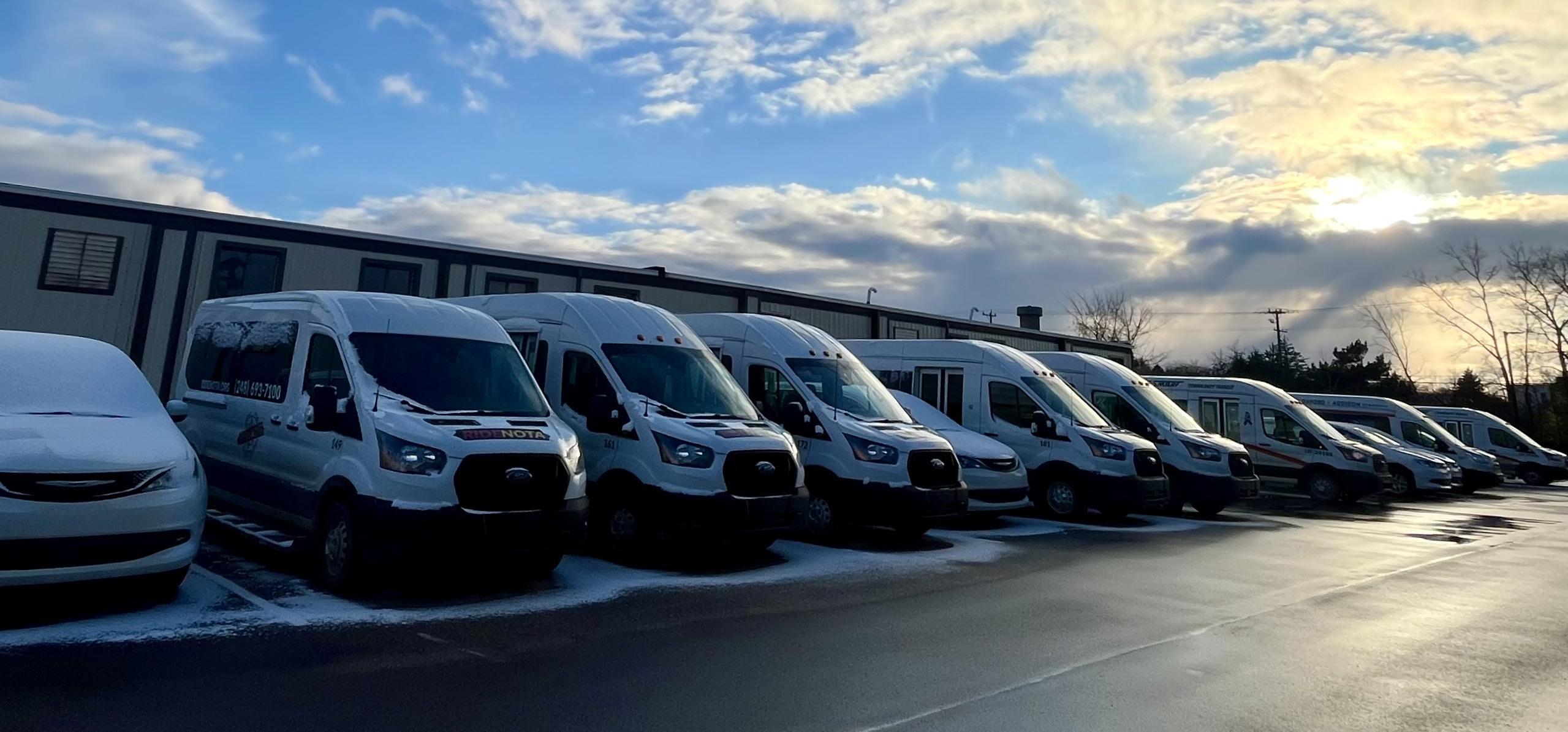
Funding collected through the Oakland County Public Transportation Millage in 2024 amounted to $69.3 million, with about $53.1 million spent on transit provider contracts. This allocation of funds reflected Oakland County’s commitment to enhancing and expanding transportation services for the benefit of all residents.
2024 Millage Revenue: $69,314,463
Administration: $412,000
Transit Provider Contracts: $53,088,925
Community Transit Plan: $550,000
Access to Transit Program: $2,000,000
Customer Experience Tracking (Qualtrics): $335,550
Remaining Funds: $12,927,988
2024 Transit Provider Contracts
Commissioned by Oakland County and supported by SMART and local transit providers, the “This Ride’s on Us” program offers free, door-todoor public transportation for veterans and their caregivers. Launched in June 2024, the initiative aims to improve mobility and quality of life for the county’s 53,000 veterans—over half of whom are over 65 and many of whom face mobility challenges. The program has already provided nearly 10,000 rides for medical appointments, errands, and visits to senior centers. Originally set to conclude in September 2024, the program was extended through September 2025, thanks to a grant from the Michigan Veterans Affairs Agency and subsequent funding from Oakland County.
This initiative expands upon previous transportation services that were limited to benefits-related appointments, now encompassing personal care tasks and social outings. By offering comprehensive transit options, the program significantly enhances veterans’ independence and mental well-being. Local transit providers—including North Oakland Transportation Authority (NOTA), Western Oakland Transportation Authority (WOTA), People’s Express (PEX), and the OPC Social & Activity Center—collaborate with SMART to deliver these services.
Veterans and their caregivers can schedule rides by calling (248) 419-7984 and providing proof of service, such as DD214 discharge papers or a veteran ID. Those interested in more information can visit OakGov.com/Veterans
Frank Withers, a retired Army sergeant from Waterford, regularly uses the service to visit the Waterford Senior Center. He shared, “I use this for all my traveling. It brings me to places like this here and makes my problems non-existent for a little while.” Such testimonials underscore the program’s role in fostering community engagement and enhancing the daily lives of veterans.
The “This Ride’s on Us” program exemplifies Oakland County’s commitment to supporting its veteran population through accessible transportation solutions. By addressing mobility barriers, the initiative not only facilitates access to essential services but also promotes social inclusion and overall well-being among veterans.
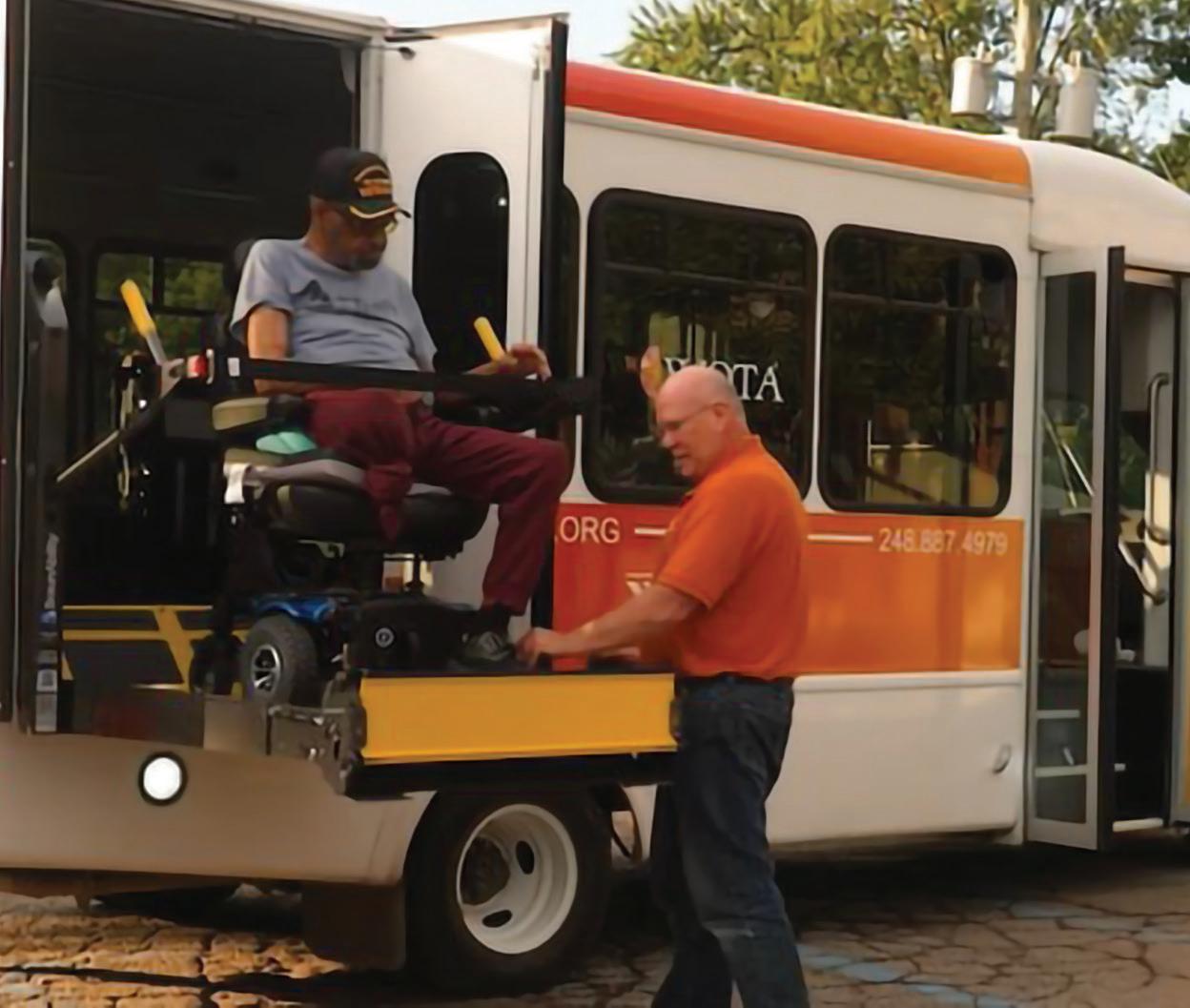
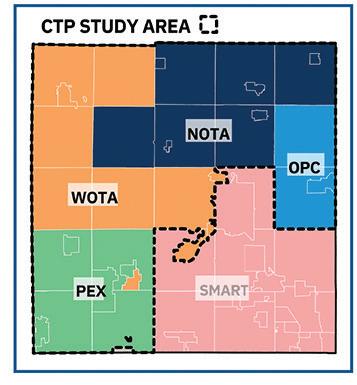
As part of Oakland County’s ongoing effort to improve transit services across the region, Oakland Transit has partnered with Qualtrics to launch a comprehensive survey of both transit riders and non-riders. The goal is to gather feedback on current experiences, unmet mobility needs, and resident priorities for future service enhancements.
The survey is open to all residents of Oakland County and is available online at oaklandtransit.qualtrics.com. Responses will help guide future investments and shape the development of a modern, accessible, and equitable public transit network.
Through this initiative, Oakland Transit aims to:
• Understand the current experiences and expectations of riders and non-riders
• Identify barriers preventing transit use, especially among seniors, youth, and underserved communities
• Pinpoint areas where service improvements or new options are most desired
• Gather input on long-term transit priorities, such as frequency, connectivity, and accessibility
This survey is a continuation of the county’s commitment to inclusive planning. It provides an easy and confidential way for residents to shape the future of transit in their communities. The insights collected will inform planning efforts including the Community Transit Plan, new service designs, and future millage-related decisions.
Residents are encouraged to complete the survey and share it within their networks. Early findings will be reported in the upcoming Transit Annual Report, and a full summary of insights will be published upon survey completion.
